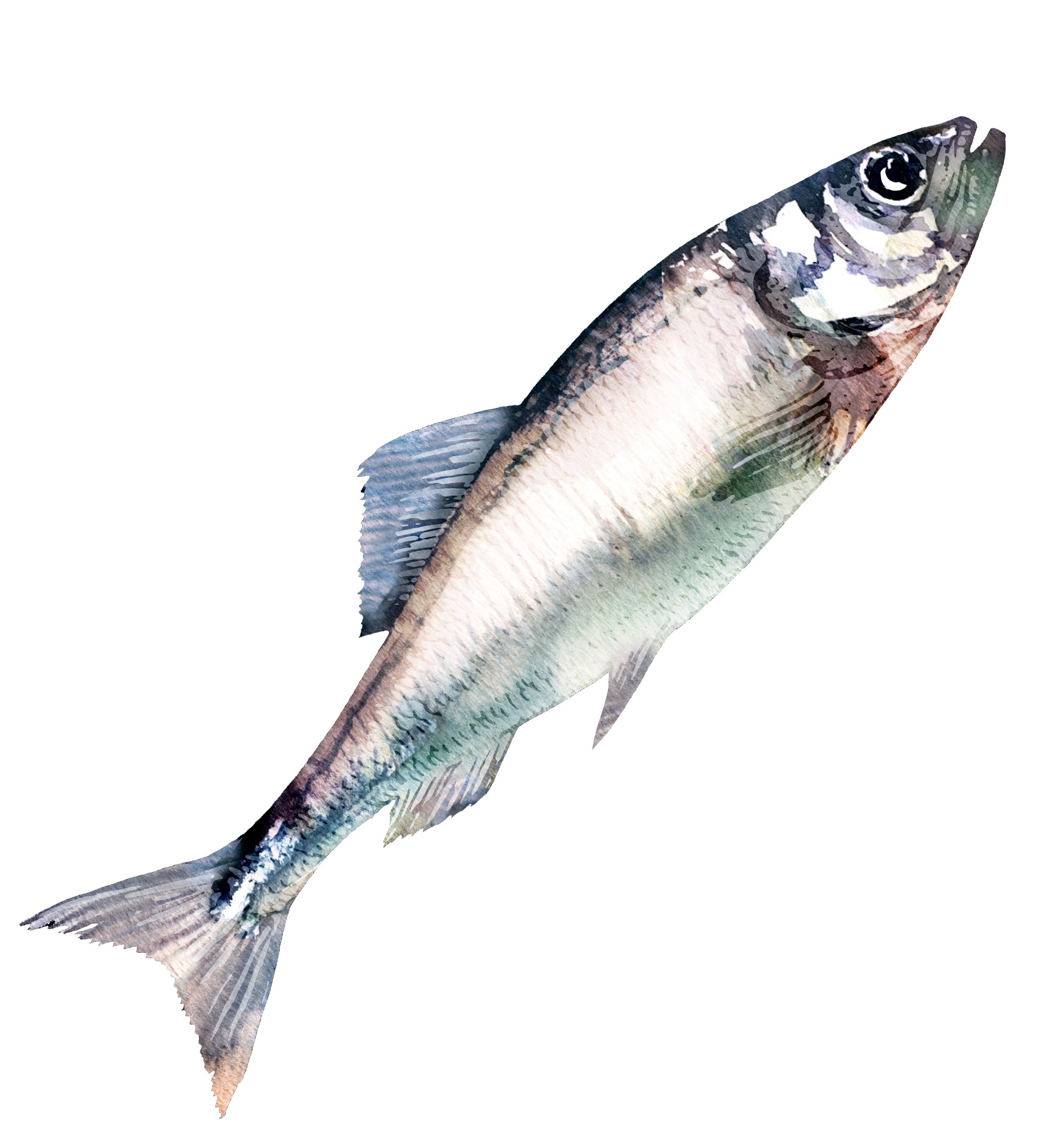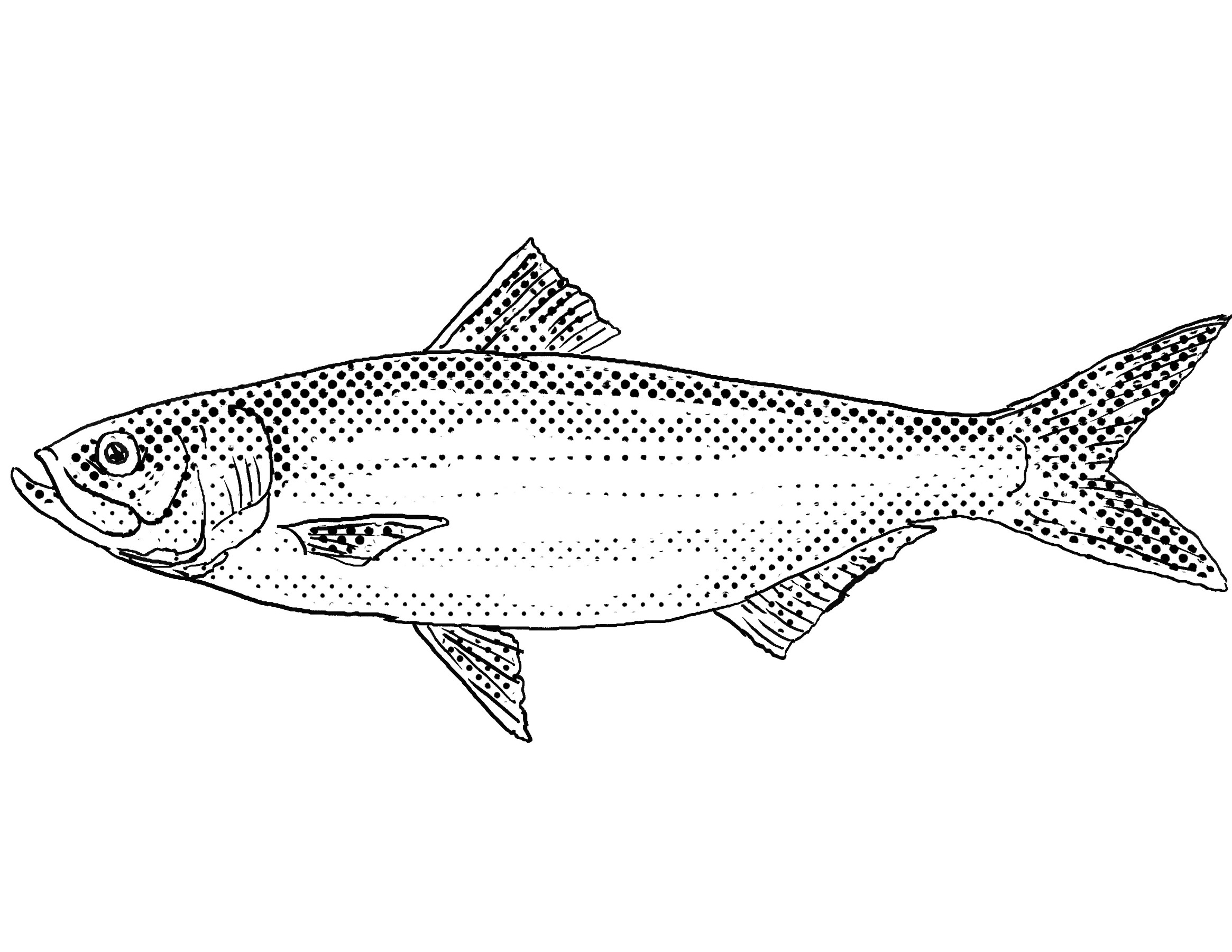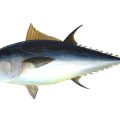The Skipjack herring, also known as Alosa Chrysochloris, is a small freshwater fish that belongs to the family Clupeidae. The fish is also known by other names, such as river herring, blue herring, Tennessee tarpon, McKinley Shad, and Alewife. The average size of this fish is around 25 cm (10 inches) in length. They can grow to a maximum length of approximately 40 cm (16 inches). Skipjack herring plays an essential ecological role as a prey species for larger fish, birds, and mammals. This is why it’s also commonly used as bait.

What Does a Skipjack Herring Look Like?
The skipjack herring has a streamlined and elongated body that is laterally compressed, giving it a thin appearance. Its body is typically silver, with a blueish green back and a silvery-white belly. The scales are relatively small and tightly packed, giving the fish a smooth texture.
The head of a skipjack herring is pointed and relatively small, with a protruding lower jaw. Its mouth is terminal, located at the front of the head, and equipped with small, sharp teeth. The eyes are large and round and are situated high on the head.
One of the most distinguishing features of a skipjack herring is its lateral line, a sensory organ that runs the length of the fish’s body, from the gills to the tail. A skipjack herring’s lateral line is visible and marked by a series of small, dark spots.
The skipjack herring looks like some other herring species and is often confused with them. But be careful because no other herring species makes as good bait as a skipjack herring. The two fish commonly confused for skipjack herring are the alewife (Alosa pseudoharengus) and the blueback herring (Alosa aestivalis).
There are a few key differences between these species. The alewife has a deeper body and a larger eye, while the blueback herring has a darker back and a more pointed head. Additionally, the lateral line of the blueback herring is less clearly defined than that of the skipjack herring.
Where can you catch Skipjack herring?
Instead of buying skipjack herrings as bait, you can catch them and hone your angling skills because they are plentiful.
Skipjack herring are throughout the eastern United States, from the Gulf of Mexico to the Hudson River. They inhabit freshwater and brackish water systems, including rivers, streams, creeks, and lakes. Skipjack herring are anadromous fish that migrate from saltwater to freshwater to spawn.
The spawning season for skipjack herring occurs in late winter or early spring, typically between February and April, depending on the location. During this time, they move upstream in large numbers to spawn in shallow, fast-moving water. After spawning, they return to saltwater, where they spend the remainder of the year.
When fishing for skipjack herring, the best places to target them are in the rivers and creeks they inhabit. Look for areas with fast-moving water and rocky or gravelly bottoms. In particular, try to fish around structures that create eddies or pockets of slower water, as this is where skipjack herring tend to congregate.
Some of the best spots to fish for skipjack herring include the Cumberland and Tennessee Rivers in Tennessee, the Ohio River, the Hudson River in New York, and the Delaware River in Pennsylvania. In these areas, skipjacks are caught using various methods, including drift fishing, casting lures or jigs, and using live bait such as worms, shrimp, or small minnows.
When to fish for Skipjack herring?
The best time to fish for Skipjack herring is during the spawning season when they migrate upstream to shallow waters because, at that time, they are in huge congregations, so it will be easier to catch them in the masses. This annual spawning of theirs runs in late winter or early spring, typically between February and April, so that’s the time you should get your fishing equipment ready.
Regarding the best time of day to catch skipjack herring, they tend to be more active during low-light periods, such as dawn and dusk. During these times, they may move into shallower water to feed, making them more accessible to anglers. However, skipjack herring can be caught throughout the day if you know where to look and how to fish for them.
It’s also worth noting that fishing for skipjack herring can be affected by weather conditions. For example, they may be less active on sunny, hot days and more active on cloudy or overcast days. Additionally, heavy rainfall or flooding can cause the fish to move around or disperse, making them more challenging to catch.
Why is Skipjack herring commonly used as bait?
Skipjack herrings are commonly used as bait because they are fish with a strong odor. The strong scent of skipjack herring comes from the natural oils in their flesh. These oils are released into the water when the bait fish is cut or torn, creating a trail of scent that attracts predatory fish to the bait.
The oily nature of their flesh also helps the bait stay on the hook longer than other bait, which can be extremely helpful when trying to catch overactive fish and fling around once caught. There is less chance of losing a catch if you use skipjack herring as bait.
Another reason skipjack herrings are popular as bait is their abundance worldwide. They are a relatively common fish species in freshwater rivers and lakes and are readily available to anglers. Additionally, skipjack herrings are relatively inexpensive compared to other types of bait fish, making them an attractive option for budget-conscious anglers.
Which fish can be caught using Skipjack as bait?
Skipjacks can be used as bait for a variety of fish species. Some of the fish that can be caught using skipjacks as bait include:
Tuna
Skipjacks are often used as bait when fishing for tuna. Tuna are large, saltwater fish prized for their meat. They are caught using various techniques, including trolling, casting, and jigging.
Marlin
Marlin is a type of billfish that is found in the open ocean. They are a popular game fish often caught using skipjacks as bait. Marlins can weigh several hundred pounds and are known for their acrobatic jumps when hooked.
Mahi-Mahi
Mahi-Mahi, also known as dolphin fish, is a brightly colored fish found near the water’s surface. They are a popular game fish often caught using skipjacks as bait. Mahi-Mahi is known for its fast, powerful runs when hooked.
Wahoo
Wahoos are large, predatory fish found in the open ocean. They are known for their speed and are often caught using trolling lures or skipjacks as bait. Wahoos are prized for their meat, which is white and flaky.
Sailfish
Sailfish are a type of billfish found in warm, tropical waters. They are a popular game fish caught using skipjacks as bait. Sailfish are known for their long, pointed bills and ability to swim at high speeds.
King Mackerel
King Mackerel, also known as kingfish, is a popular game fish in the Atlantic Ocean and the Gulf of Mexico. They are often caught using skipjacks as bait and are known for their powerful runs and aggressive strikes.
Yellowfin Tuna
Yellowfin tuna is a type of tuna found in warm, tropical waters. They are game fish and are often caught using skipjacks as bait. Yellowfin tuna can weigh several hundred pounds and are known for their strong, powerful runs when hooked.
Bluefin Tuna
Bluefin tuna is a highly prized game fish in the Atlantic and Pacific Oceans. They are often caught using skipjacks as bait and can weigh several hundred pounds. Bluefin tuna are known for their strong, powerful runs and delicious, high-quality meat.
Barracuda
Barracuda is a predatory fish found in the tropical and subtropical waters of the Atlantic, Pacific, and Indian Oceans. They are often caught using trolling lures or live bait, including skipjacks.
Amberjack
Amberjack is a game fish found in the Atlantic and Pacific Oceans. They are known for their fighting ability and are caught using live bait such as skipjacks.
Grouper
Grouper is a popular bottom-dwelling fish found in the Atlantic and Pacific Oceans. They are often caught using live bait, including skipjacks, and prized for their delicious white meat.
Snapper
Snapper is a game fish found in the Atlantic and Pacific Oceans. They are often caught using live bait, including skipjacks, and are known for their strong, hard-fighting ability.
Cobia
Cobia is a popular game fish in the Atlantic and Gulf of Mexico. They are often caught using live bait, including skipjacks, and are known for their powerful fighting ability and delicious meat.
Jack Crevalle
Jack Crevalle is a game fish in the Atlantic Ocean and the Gulf of Mexico. They are often caught using live bait, including skipjacks, and are known for their hard-fighting ability and aggressive behavior.
Yellowtail
Yellowtails are a type of game fish found in the Pacific Ocean. They are often caught using live bait, including skipjacks, and are known for their delicious, firm-textured meat.

How to use Skipjack herring as bait?
How you use the bait to catch fish can impact whether you’ll be able to catch one or not. Here are some detailed instructions on how to use skipjack herring as bait:
Prepare your bait
If you’re using whole skipjack herring, you’ll need to remove the head, tail, guts, and any scales. You can also cut the fish into smaller pieces, depending on the hook size you plan to use. Remove any skin or bones and cut them into strips or chunks if you’re using skipjack herring filets.
Choose your rig
Depending on the species of fish you’re targeting and the fishing conditions, you may use a variety of rigging options. For example, you can use a simple hook and weight setup, a Carolina rig with a sliding sinker, or a jig head with a soft plastic trailer.
Add scent
Skipjack herring is quite a smelly fish, but it can be relatively odorless compared to other baitfish types. Adding scent can help attract fish. You can use a commercial scent product or add homemade odors like garlic or anise oil. However, the natural oils in Skipjack’s body do the magic most of the time.
Present your bait
How you present your skipjack herring bait will depend on the fishing conditions and the fish species you’re targeting. In general, you’ll want to cast your bait into an area where you know fish are likely to be feeding or holding, such as near underwater structures or deep pools. You can also experiment with different retrieval speeds and techniques, such as jigging or slow trolling.
Be patient
Fishing with skipjack herring can be very effective, but it may take some time to attract the attention of your target fish. Be patient and give your bait enough time to draw fish before reeling it and trying a different location or presentation.
Conclusion
In conclusion, Skipjack herring can be used as bait for various fish. Because of its easy accessibility, you can get loads of them to use as bait. You’ll get a good catch as long as you know how to make the most of it.












Pingback: What is the Difference Between Grouper and Skipjack? | Reel Fishing Guru
Pingback: What is the Difference between Catfish and Skipjack? | Reel Fishing Guru